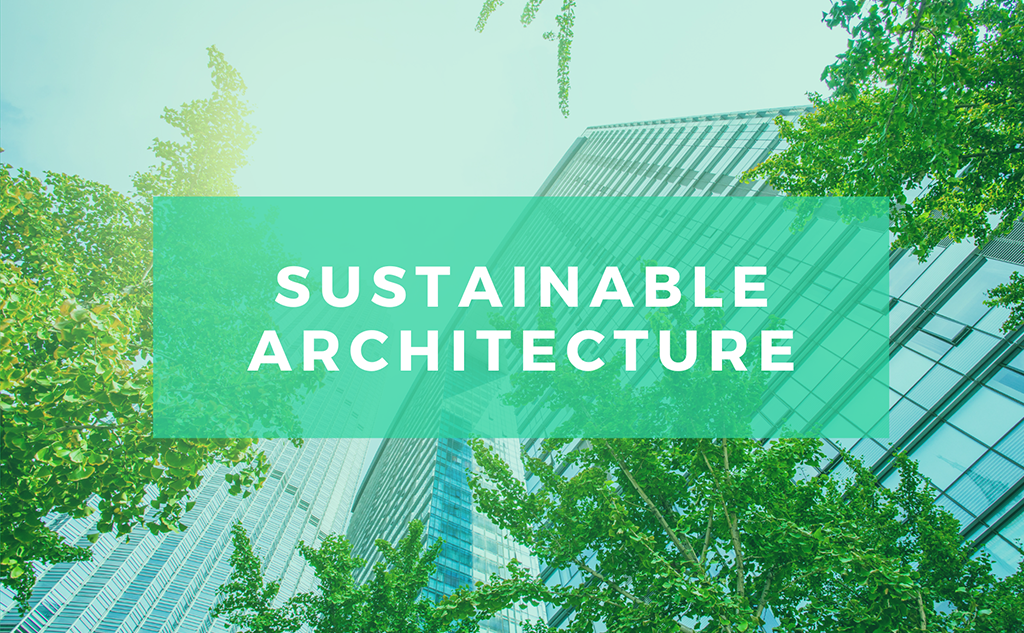Growing populations, increasing urbanization, declining biodiversity and climate change… We are facing major environmental, economic and social challenges. Today, rethinking and adapting our cities is a decisive step in combating climate change and adapting to its consequences.
As buildings are an essential component of sustainable cities, sustainable architecture aims to solve these problems by combining the comfort of life for residents with environmental protection. Here’s how it works.
What is sustainable architecture?
Sustainable architecture is based on a number of key principles, the most important of which are the rational use of natural resources, minimizing the ecological impact of buildings on the environment, respecting the ecosystem and improving the quality of life of both current inhabitants and future generations.Sustainable building architects therefore focus on the energy and environmental performance, as well as the resilience, of these buildings. They aim for buildings that are resource-efficient, environmentally friendly and able to withstand climate change. Buildings that blend seamlessly into their surroundings to promote biodiversity and offer residents greater living comfort.
Principles and techniques of sustainable architecture
Ecological architecture is an approach that combines biomimicry (imitation of natural processes) and optimization techniques (building orientation, shape, size, insulation, etc.). In particular, it favors bio-sourced, natural, recycled and/or recyclable materials, and must reduce the building’s energy consumption throughout its life cycle. A sustainable building must also offer optimal comfort and a healthy environment for its occupants.
Use of sustainable and recyclable materials
Wood, lime, bricks and stone, glass wool, wood wool and rock wool are all renewable materials with a low environmental footprint, which enable the source from which they come to be managed in a sustainable way, and guarantee a healthy environment for residents. They are therefore widely preferred. Similarly, the paints used are more natural, less harmful to the environment and human health.

Hands holding cellulose fiber for ecological insulation of the house. Conservation of home heat and energy saving
Thermal insulation and energy production
Green buildings also boast a high level of energy performance: they consume very little heating in winter and considerably limit heat gain in summer. Architects therefore incorporate excellent thermal insulation into their sustainable designs, and also play on the orientation, shape and size of the building.
The use of vegetation is another essential element: around the buildings, it protects them from the sun and heat, and on the facade, it provides excellent insulation in both summer and winter. Plants also help to integrate architecture into its environment and maintain biodiversity (different plant species, insects and animals). They also provide a more pleasant living environment for residents.
Finally, sustainable architecture aims for energy self-sufficiency and favors renewable energies (photovoltaic panels, heat pumps, solar water heaters, wind power, etc.). Eventually, even BEPOS buildings, or positive energy buildings (producing more than they consume), are envisaged.
Urban planning and the creation of sustainable, resilient neighborhoods
Between heat islands, urban congestion, loss of biodiversity, greenhouse gas emissions and poor air quality, both our cities and their inhabitants are suffering. Urban planning is therefore a priority in the fight against climate change, adapting cities to its consequences and improving the quality of life of city dwellers.
For local authorities, this approach to the city of tomorrow is an integral part of urban planning. This is also the context in which eco-districts are flourishing. In these eco-neighborhoods, green spaces and pedestrian areas determine urban planning, not the other way around. The emphasis is also on public and, where possible, soft transport (bicycle, tramway, cable car, etc.).
Eco-neighborhoods that enable residents to live in pleasant, healthy surroundings (natural landscapes, improved air quality, reduced heat islands, etc.), as well as increasing biodiversity, preserving resources and reducing greenhouse gas emissions.
Is ecological architecture essential to building the city of tomorrow ?
Like eco-districts and urban agriculture, ecological architecture is also part of the sustainable city approach. It is a means of further reducing resource depletion and greenhouse gas emissions. It also helps restore biodiversity by reintroducing vegetation, insects and small animals into the city. It provides a bearable temperature and a better living environment for residents.
Ecological architecture designs interior spaces (healthy materials, natural ventilation and luminosity, etc.) and exterior spaces (healthy air, natural landscapes, etc.) that contribute to improving the physical and mental health of city dwellers.
Sustainable architecture, or how to meet economic, social and environmental challenges.
Ecological architecture offers concrete solutions to today’s challenges, such as climate change, resource scarcity and socio-economic problems. By integrating the principles of energy performance, resilience, biodiversity preservation and improved quality of life for residents, ecological architecture can transform our cities into spaces that meet the needs of present and future populations, while preserving the environment in a sustainable way.




